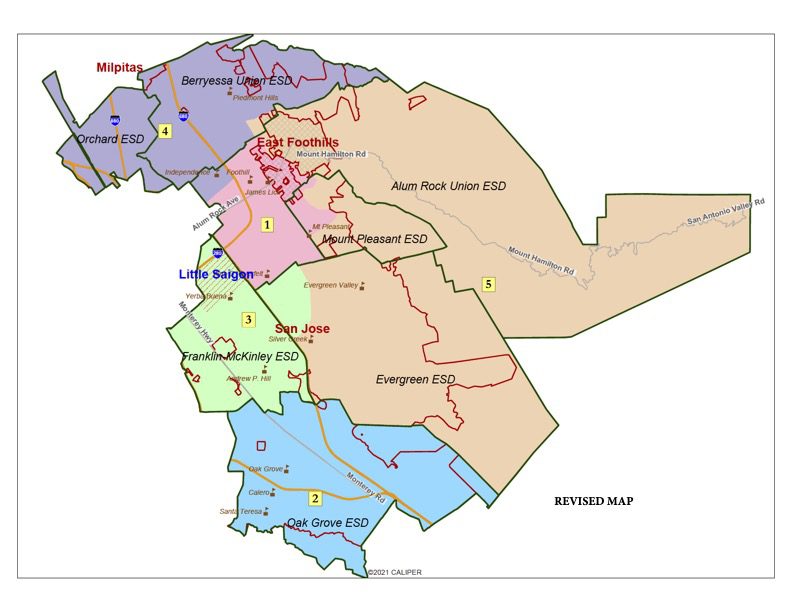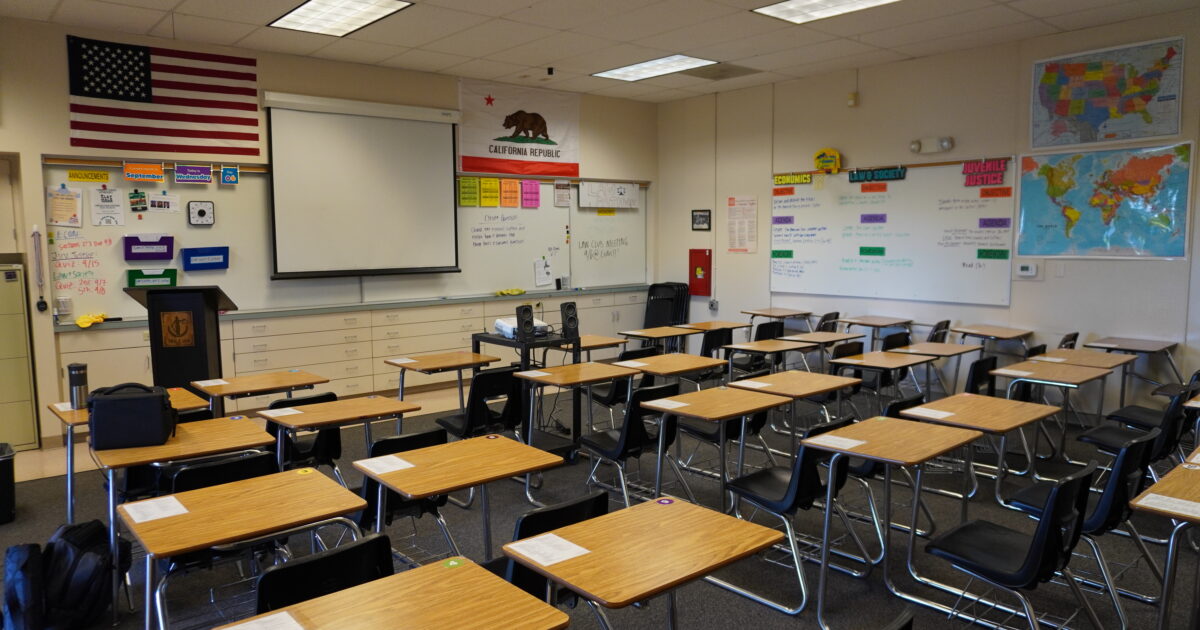An East San Jose school district is changing how and when its board members are elected.
The East Side Union High School District board of trustees on Oct. 3 unanimously approved switching from at-large elections to district elections and adopted a final district map. The board also determined what years trustees would be up for election.
The current five trustees have staggered terms, with some ending in 2026 and others in 2028. Although trustees usually serve four-year terms, the board applied a waiver allowing an Alum Rock area trustee to serve a two-year term temporarily. This allows the district to sync up with the presidential election cycle, which experiences higher voter turnout. The trustee will appear on the 2026 and 2028 ballots. Following 2028, they will revert back to a four-year term.
“The sequencing of elections allows us look at voting trends to make sure voters have an opportunity to weigh in on their trustees when they weigh in on elections of great importance to them, such as presidential elections,” Superintendent Glenn Vander Zee told San José Spotlight.
A legal claim that the district is in violation of the California Voting Rights Act prompted the change, arguing at large elections deny marginalized residents equal representation. The district used census data to develop draft maps and trustees held eight community input meetings from April through October.
The final map will go before the County Committee on School District Organization under the Santa Clara County Office of Education for final approval. If approved, the revised district would be established in the upcoming months, with the first elections in 2026.
Board President Bryan Do said redistricting is one of the most momentous decisions the board has made.
“This could have been contentious, pitting one community (against) the other, but instead we have a collaborative, positive and I might even say harmonious process,” Do said at the meeting. “I know the decision we make today will have long-term consequences. We did everything we can to make sure that we arrived at conclusions that meet the needs of our public and our students.”
 The proposed district map for the East Side Union High School District. Image courtesy of East Side Union High School District.
The proposed district map for the East Side Union High School District. Image courtesy of East Side Union High School District.
Vander Zee said it’s important to maximize local representation. He said while local representation is needed, every trustee should still prioritize the needs of all 20,000 students — 23,000 including charter students — and not just those from their trustee area.
“The revised map allows for the diverse constituencies to mobilize for candidates and to elect candidates that represent the diverse needs of the districts, as well as to allow smaller constituencies to weigh in on their needs,” he said. “A population like the African American community, which is less than 2% of our total population, their voice could be lost. Because of the redistricting … there are two districts where they make up almost 4%. It allows them better representation.”
Although the majority of the East Side Union High School District lies within San Jose, it also includes parts of Milpitas. In creating the maps, the district contracted Justin Levitt, a Loyola Law School professor and constitutional law expert. Levitt said federal guidelines require trustee areas to include about the same number of residents — with a maximum 10% difference between the largest and smallest districts. The district drew the maps blind to political data and where any of the incumbents lived.
“One of the things we always look at … is to try to get a sense of not only the racial numbers, the ethnic numbers, but also a little bit about the different socioeconomic factors,” Levitt said at the meeting.
Contact Lorraine Gabbert at [email protected].


